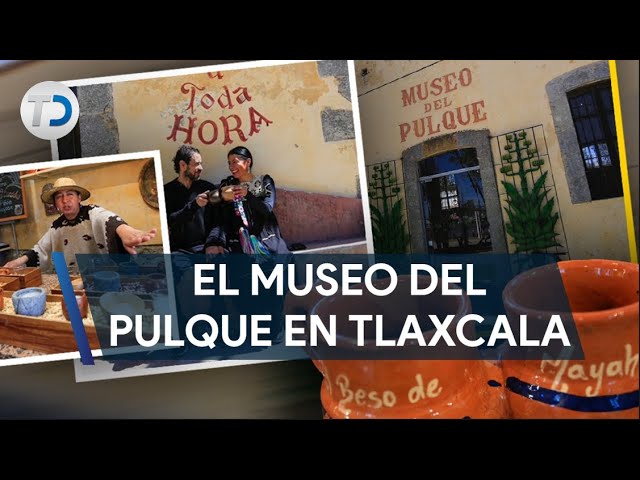Introduction to the Museo del Pulque y las Pulquerías
Mexico’s Vibrant Pulque Tradition: Pulque, a traditional Mexican alcoholic beverage made from the fermented sap of the agave plant, is an emblem of the rich cultural heritage that permeates the country. Despite its ancient origins dating back to the era of the Aztecs, pulque remains a popular drink in contemporary Mexico. The Museo del Pulque y las Pulquerías is a tribute to this timeless drink, offering visitors a unique glimpse into its history, production, and the role it plays in Mexican society.
Exploring the Museo del Pulque: Nestled in the bustling streets of Mexico City, the Museo del Pulque y las Pulquerías is more than just a museum—it’s an experience that engages all the senses. As you traverse the exhibition halls, you’re invited to learn about the traditional methods of pulque production, encounter the diverse array of pulque flavors, and understand the social aspects that make pulquerías, traditional pulque bars, a staple of Mexico’s communal life.
The Pulquerías – A Social Hub: Pulquerías have long been recognized as important social gathering places for Mexicans from all walks of life. These establishments are not only a space to enjoy pulque but also a melting pot of conversation, music, and tradition. Each pulquería has its own unique atmosphere, often adorned with colorful murals and hosting lively events that reflect the neighborhood’s character.
Preserving Pulque’s Legacy: As modern trends continue to evolve, the Museo del Pulque y las Pulquerías plays a crucial role in preserving this cherished aspect of Mexican culture. Through its interactive displays and educational programs, the museum is dedicated to ensuring that future generations understand and appreciate the significance of pulque. By visiting, you are participating in a centuries-old tradition and contributing to the conservation of Mexico’s living heritage.
The Historical Significance of Pulque
The drink known as pulque is steeped in a rich history that stretches back to the pre-Hispanic period of Mexico. Revered as the “drink of the gods,” pulque was once a sacred beverage consumed during religious ceremonies by the Aztecs. The milky liquid, extracted from the maguey plant, not only held spiritual significance but also became a cornerstone of social and economic structures in the ancient society.
The significance of pulque can be traced to its mythological origins. According to Aztec mythology, the goddess Mayahuel was the deity associated with the maguey plant, and her story intertwines with the creation of pulque. It is said that from her body came the first maguey plant, and with it, the secret to creating this vital elixir. This divine association elevated pulque’s status, making it more than just a drink, but a sacred vessel carrying the essence of the gods.
In colonial times, pulque transitioned from a religious sacrament to a popular beverage among all social classes. Spanish colonizers initially shunned pulque, but over time, the drink became an economic staple in the colonial economy, rivaling even the import of Spanish wines. Pulquerías, or pulque bars, became centers of social interaction where people from diverse backgrounds gathered, making pulque an important cultural unifier in a changing society.
Despite its deep-rooted place in Mexican heritage, the popularity of pulque saw a decline with the introduction of beer and other spirits, leading to a period where pulque was seen as a poor man’s drink. However, the 21st century has witnessed a resurgence of interest in traditional Mexican beverages, placing pulque back on the map as an artisanal and historical beverage. This revival has sparked a newfound appreciation for pulque’s past and its role in Mexico’s cultural landscape.
Today, the historical significance of pulque is recognized and celebrated in various festivals and museums throughout Mexico. The ancient beverage has become a symbol of national pride and a reminder of Mexico’s rich cultural tapestry. While not every traveler may fancy its unique taste, understanding the story of pulque offers insight into the soul of Mexican history and the enduring legacy of its indigenous cultures.
What to Expect When Visiting the Pulque Museum
When you step into the Pulque Museum, you’ll be greeted by an intriguing blend of history and culture that tells the tale of Mexico’s ancient beverage, pulque. This traditional drink, made from the fermented sap of the agave plant, has been a staple in Mexican society for centuries. The museum offers a journey through time, showcasing how pulque has been intertwined with religious ceremonies, daily life, and social events.
As you navigate through the exhibits, you’ll discover a wide array of artifacts that provide insight into the pulque-making process. From rustic tools used by the indigenous peoples to extract agave sap, to the large fermentation vats that give pulque its unique flavor, the museum pays homage to the craftsmanship and techniques that have been passed down through generations. Interactive displays and authentic equipment offer a hands-on experience, allowing visitors to truly engage with pulque’s rich history.
One of the highlights of the Pulque Museum is the sensory room, where visitors can not only learn about the different varieties of pulque but also sample them. The museum’s guided tasting sessions are both educational and enjoyable, giving guests the chance to savor the subtle differences between the various flavors. It’s an invitation to expand your palate and appreciate the beverage that has won the hearts of many Mexicans over the millennia.
Throughout the year, the museum also hosts a variety of thematic events and workshops. Whether it’s a deep-dive into the agricultural practices surrounding the agave plant or a celebration of the music and art inspired by pulque culture, these events add an extra layer of immersion. Guests leave with a newfound appreciation for this humble yet significant aspect of Mexican heritage, understanding why pulque is more than just a drink—it’s a symbol of resilience and communal spirit.
Pulquerías – Experiencing Pulque Culture Firsthand
Mexico is a land steeped in tradition and culture, and one of its most intriguing and ancient beverages is pulque. Pulque, an alcoholic drink made from the fermented sap of the agave plant, has been enjoyed in the region for at least two thousand years. Its consumption was highly ritualistic, reserved for religious ceremonies and consumed by priests and nobility. Today, however, pulque is experiencing a revival and has become a symbol of Mexico’s rich heritage, accessible to all who seek to partake in its unique flavors and history.
Pulquerías, the traditional bars dedicated to serving pulque, offer visitors a glimpse into this age-old tradition. Within their walls lies the heart of pulque culture. Each pulquería has its own atmosphere, ranging from rustic and historical to chic and modern, reflecting the integration of past and present. Visiting one of these establishments isn’t just about sipping on this milky, somewhat viscous beverage; it’s an immersive cultural experience.
The uninitiated may find the taste of pulque a bit surprising. It is slightly sour and tangy, with textures and flavors that are far from the familiar beers and wines. Nonetheless, regulars love it for its earthy tones and often, the health benefits that are associated with its consumption. To make the pulque more approachable for newcomers, many pulquerías offer “curados”, which are pulques flavored with fruits, nuts, or other natural ingredients, making for a varied and often delightful tasting journey.
Beyond the drink itself, the pulquerías serve as social centers where locals gather to chat, play games, and enjoy music. It’s common to encounter lively discussions, spirited card games, or even live bands that contribute to the convivial atmosphere. Pulquerías champion a sense of community and inclusivity, welcoming everyone from curious travelers to pulque aficionados.
For adventurers seeking an authentic Mexican experience, a visit to a pulquería is a must. It is more than just a place to drink; it’s where you’ll find the living, breathing essence of Mexico’s past fused with the present. Each sip is a taste of history, and each visit is a story to take home. Although the future of pulque is uncertain as trends evolve, its cultural legacy continues to thrive in the pulquerías dotted across the country.



